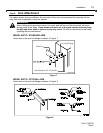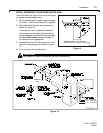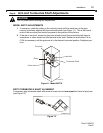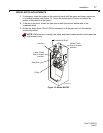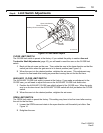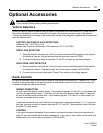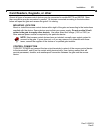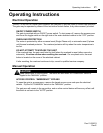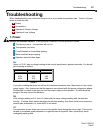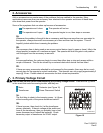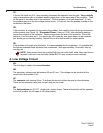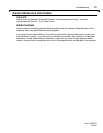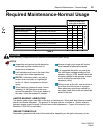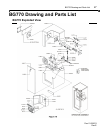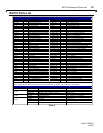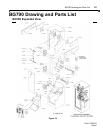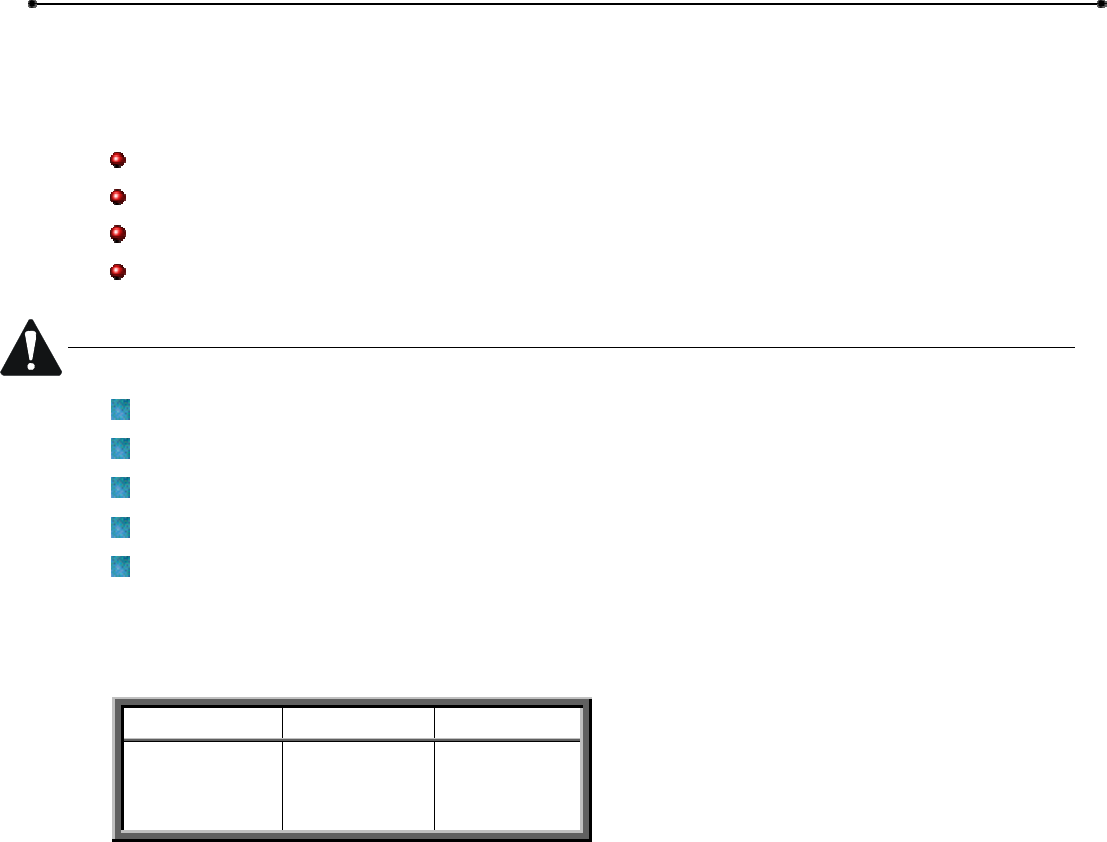
Troubleshooting 22
Doc 01-G0674
Rev E
Troubleshooting
When troubleshooting, one of the first things to do is try to isolate the problem area. The four (4) main
areas to check out are:
Power
Accessories
Operator’s Primary Voltage
Operator’s Low Voltage
1. Power
Always use extreme caution! Some possible symptoms of power problems include:
The obvious one is – the operator will not run.
The operator runs slow.
Circuit breakers or fuses keep tripping.
Motor overload keeps tripping.
Operator starts but then stops.
1A.
Using a V.O.M., take a voltage reading at the control transformer’s primary terminals. You should
get a reading as follows:
Nominal Volt. Min. Max.
120v. 108 132
230v. 207 253
460v. 414 506
Table 4
If you get a reading that does not fall into the minimum/maximum area, then check out your main
power supply. Also, make sure that the operator was ordered with the proper voltage and phase.
Another item to check is the wire run from the power supply to the operator. Double check the
gauge of the wire versus the distance.
1B.
If the voltage reading is O.K. from 1A, then take the same voltage reading with the operator
running. If voltage drops below the minimum with this reading, then there could be an excessive
current draw somewhere, or a wire AWG is too small.
1C.
In some cases, power drops can occur at only specific times during the day or night. This can be
caused by increased power demands in a general area at a specific time—particularly areas
undergoing rapid growth.



